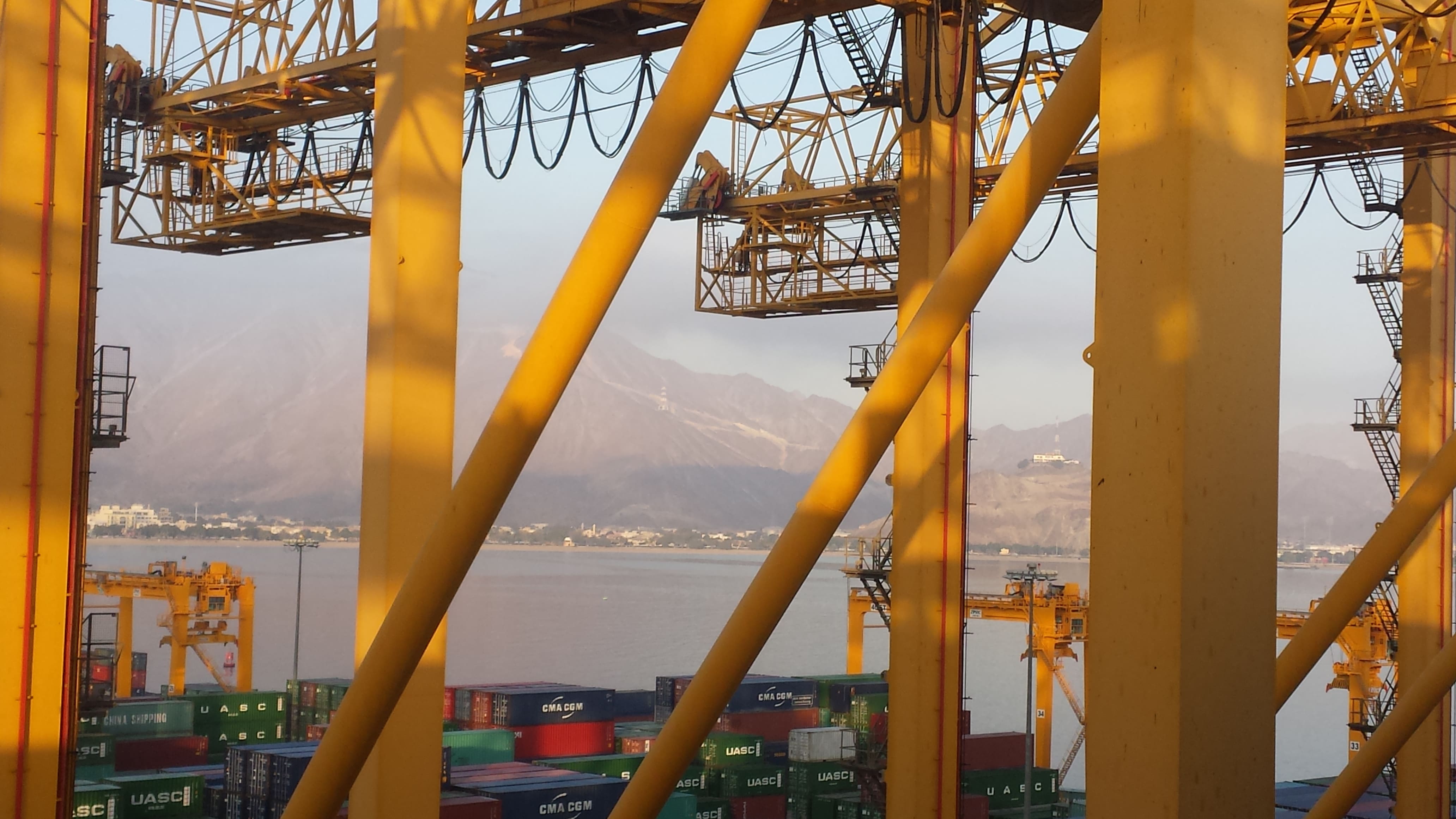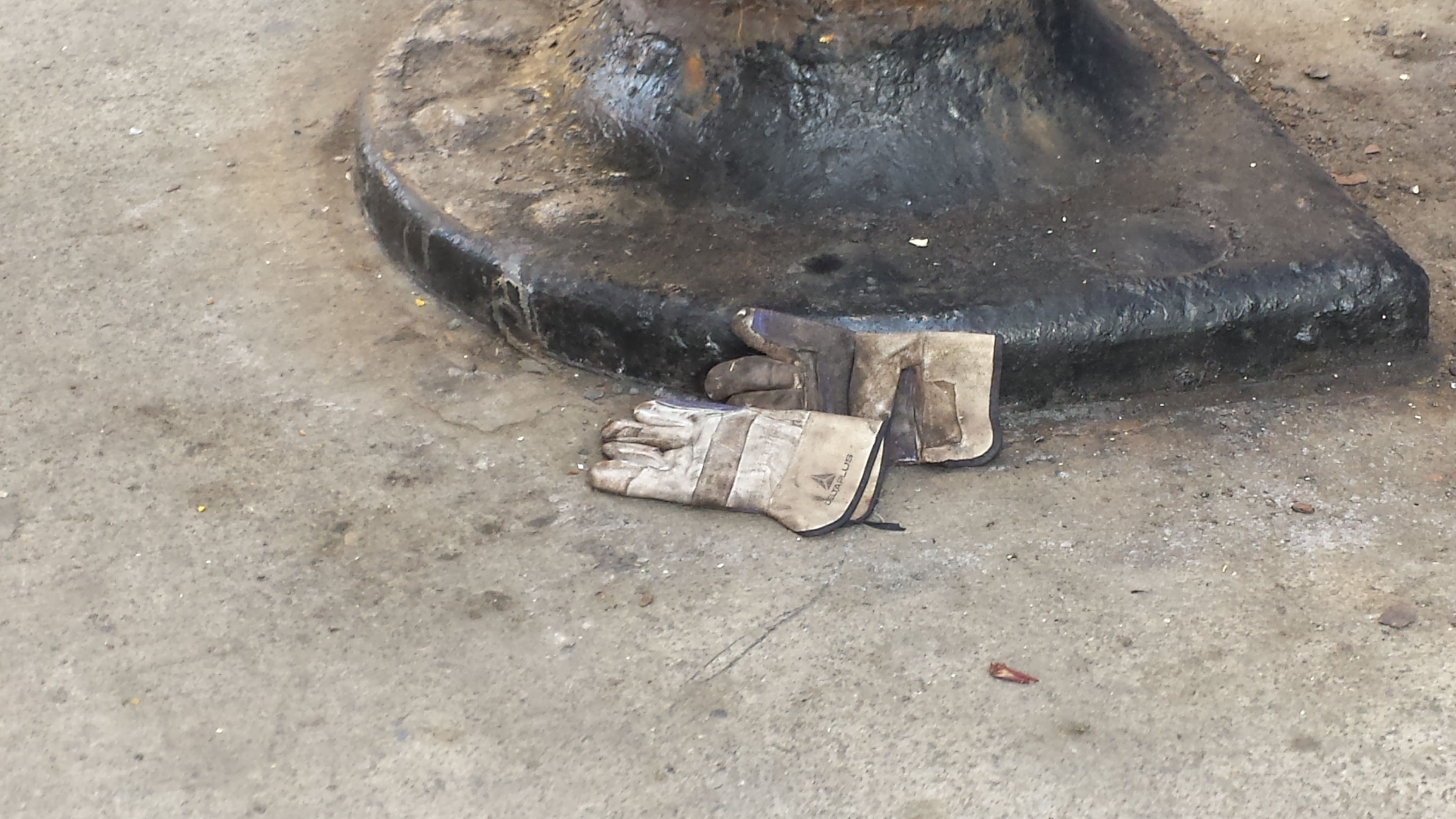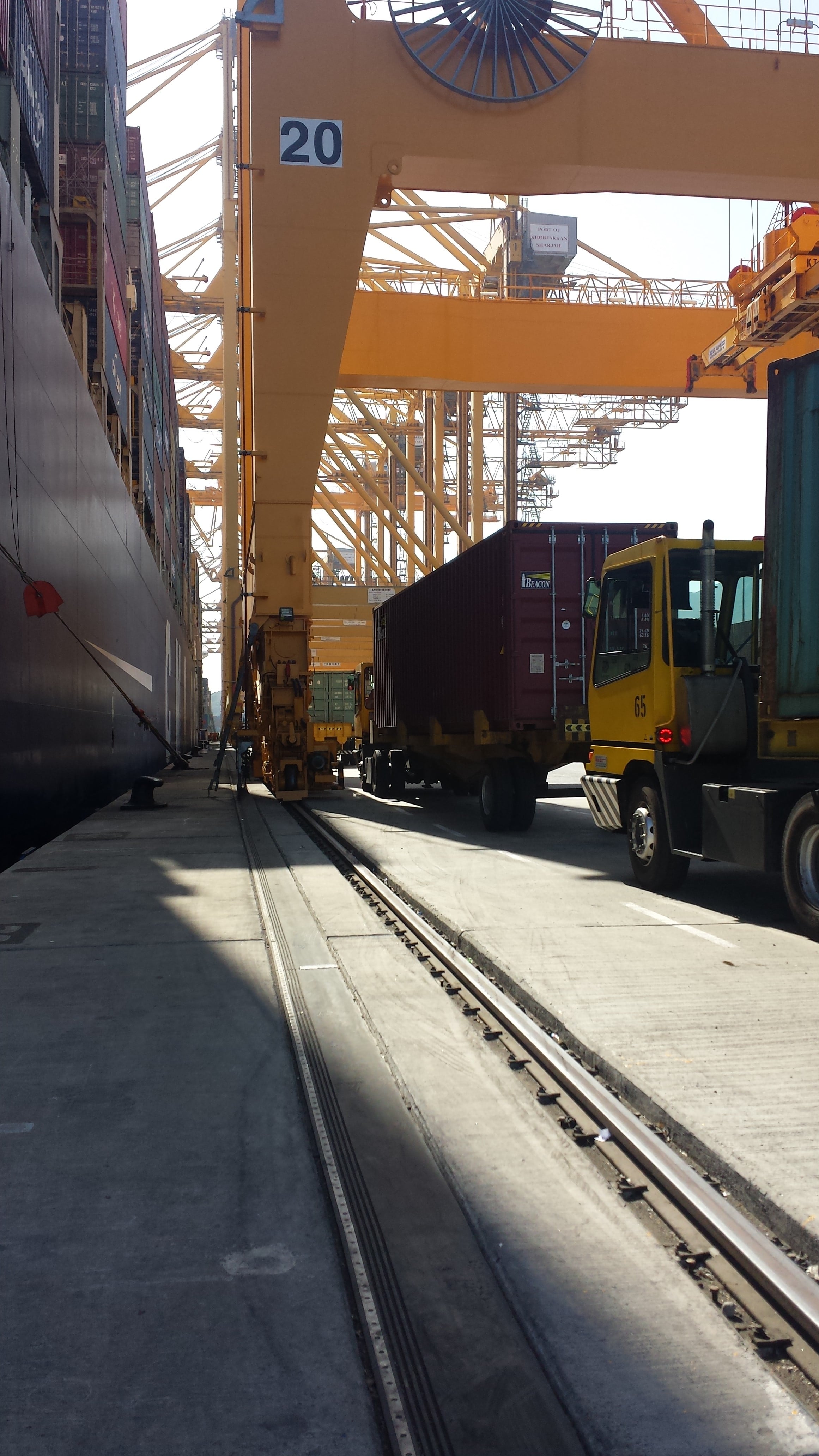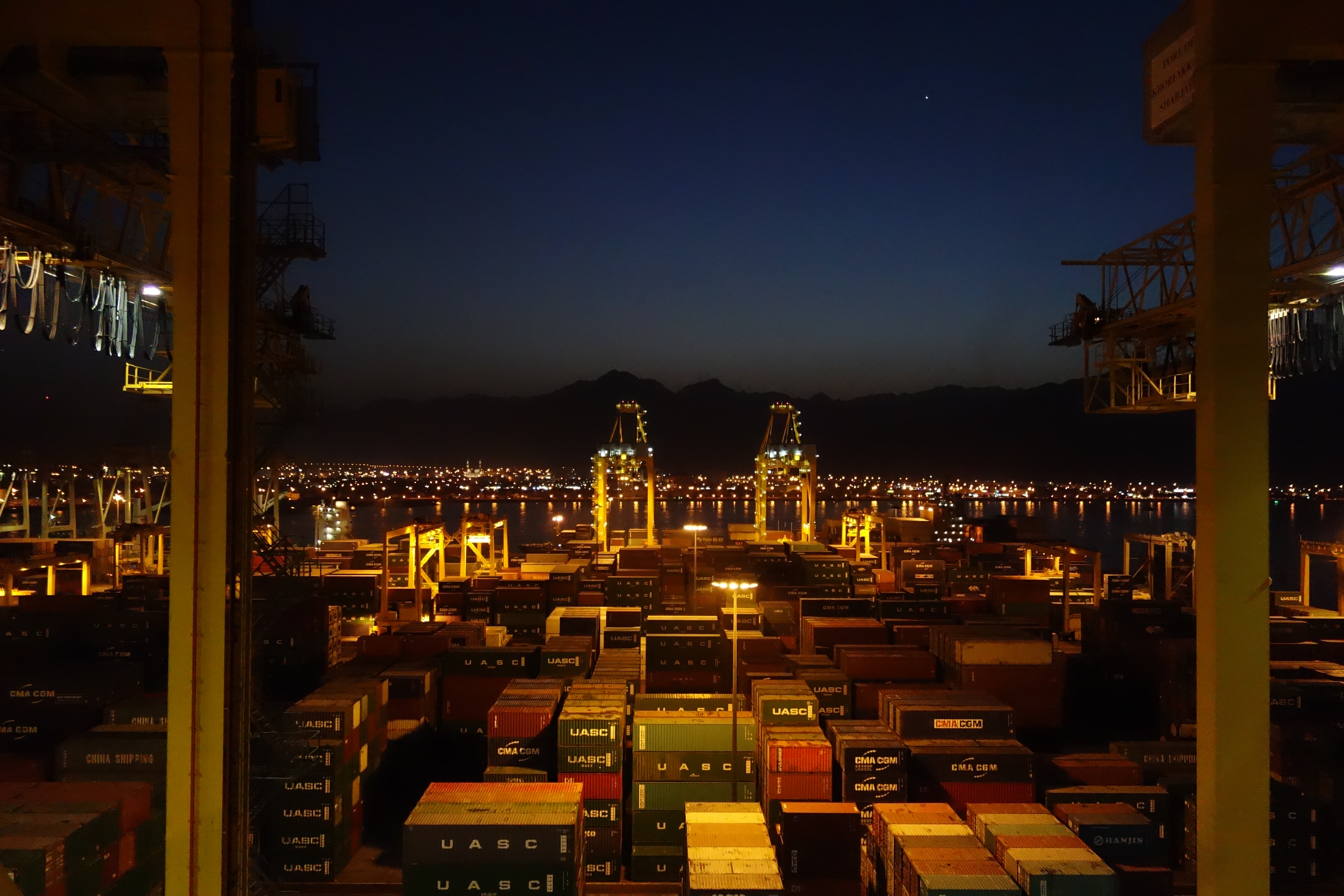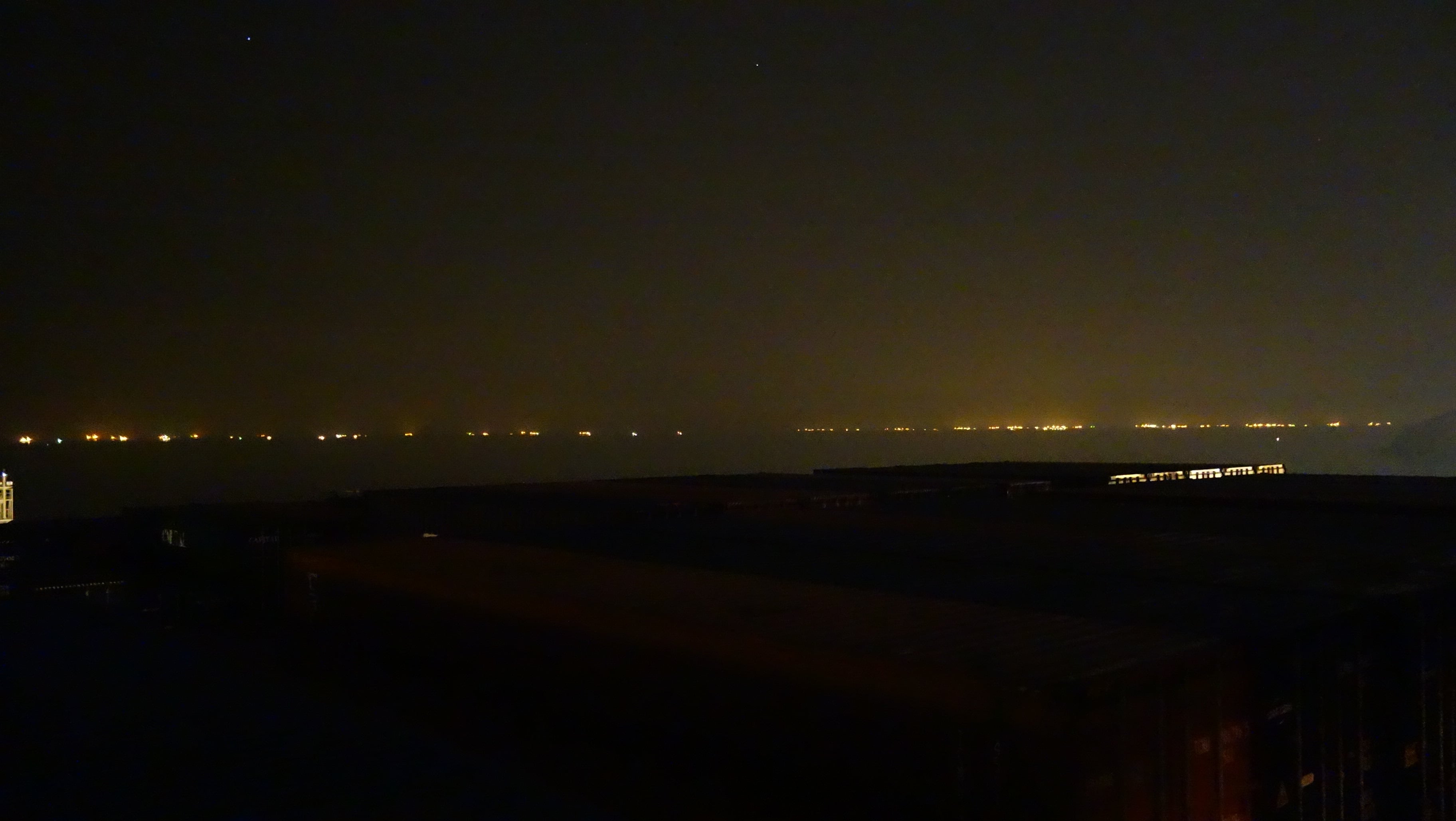Pirate Jenny: Labour and capital in Khor Fakkan
14 February 2015
in Khor Fakkan port
After several hours of watching the unloading of the ship, and after walking on the port to go to the duty-free shop (to buy a new memory card for my camera), it is rather interesting to see that my “fresh” ethnographic eyes have become more accustomed to the sights, and the sense of wonder has been replaced by a more reflexive, perhaps even sceptical, view of the work of men and machines in the port.
I suppose I can now see the incomprehension in the more experienced officers about my thrill at this experience (although the engineers themselves were not really all that surprised by my awe at the engine. Maybe something of the wonder remains when the machinery you work with is so utterly awesome). And although the epic ballet of the machinery still thrills me, I now see not the machinery first, but the workers below.
This might be because so much more cheap labour is employed to do so much more dangerous things here, and so the humans at works are so much more visible. This might also be that having wrestled with my seduction by the technological sublime, I may have laid my apprehension to rest. I see in the romance something of my history, and I am, I suppose, at peace with it. And besides I am not so dismissive of romance as so many other academics seem to be. We may deny it – and it may be denied us as the university becomes ever more an enterprise– but it is there: in all sorts of small things: the archival documents marked by human hand and acerbic humour; in the ethnographic moment of arrival (which has become a cliché) and the terror of unfamiliarity becoming the comfort of knowing people; in the sense of wonder of being a student all over again, having to unlearn and learn in equal measures. There is romance in all of this. And I suppose I have no trouble admitting that I see in my teaching and research a vocation not a job, however much there is pressure to think of it as a job both from the university-as-enterprise crowd and from those who oppose that.
But in any case, what I noticed today was the speed of loading and unloading which was entirely incomparable with Marsaxlokk. Things move here at breakneck speed. The cranes’ spreaders were already down on the ship before it had even stopped moving last night and there were empty flatbeds gathering there. Today, I watched as multiple containers were being moved at a time, which can’t possibly be safe. I only saw two stacked 40TEU containers at a time being moved but the chief mentioned that on a previous occasion he had seen them move six empty containers stacked on top of one another at one time, which sounds insane. The chief was mentioning how unsafe China was though, and as an example talked about a guy who gets on the crane’s spreader and gets on top of the containers with his pole to unlock the containers. I mentioned that this was happening last night, which surprised him a bit. The chief seems to think things are superlative in China: everything is more unsafe; rules are more often disobeyed; the tugboats are more powerful there; and arrival in the ports are far more terrifying because of all the fishing boats crowding the shipping lanes (on this point, absolutely everyone else seemed to be in consensus).
Walking around in the port, I was struck by how much this was an international of workers. Crane operators who look like they are Indonesian or Chinese; flatbed drivers who are Sikhs or venerable-looking southern Indians, or moustachioed south Asians of a sort, lithe Bangladeshis with their moustache-less white beards, lean Nepalese men. This transnationalism of course makes for non-nationalist sentiments, but also brings up the question that for mobilising, what are the common languages, common ways of knowing and moving, common grievances and stories told to redress those grievances? Common repertoires of rage and sabotage? Common breaking points for strikes or walkouts or machine-breaking?
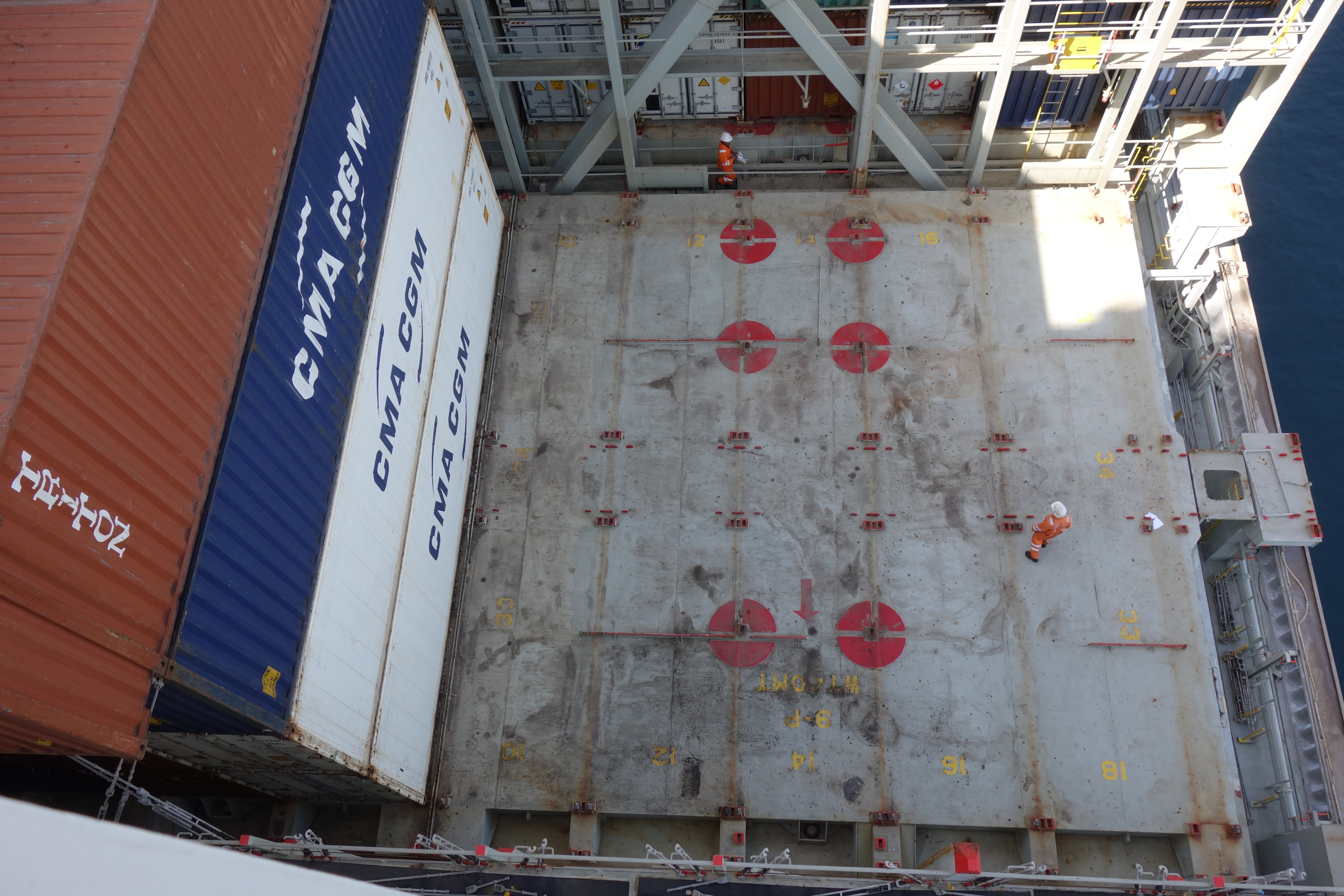
Port-workers locking in the hatch cover onboard the ship
The walk in the port was certainly a good remedy for the seduction of the epic and the steel aesthetics of technology. Work here is material and real and embodied. And certainly the South Asian guy made to stand in the heat and unlash containers from trucks or drive them in the heat is not seduced by the technological sublime. Work seems to cease only for an hour at lunch when the humid heat is already beating down at 30 degrees in February. I caught (but pretended not to) a crane-operator climbing out of his box and pissing in a corner behind his aerie high above the ship’s containers. No time I suppose to climb all the way down and go for a piss in a loo somewhere in the outer reaches of the port.
All day today, and after the encounters with the port-workers (mostly of the hello and wave variety), I have been thinking a lot about a story Sekula tells about Trotsky. For Trotsky the Potemkin sailors at the heart of the 1905 Russian revolution represented the proletarian heroes of the revolution. Sekula quotes him as writing: “Who raised the red banner on the battleship? The technicians, the engine men. These industrial workers in sailor’s uniforms who form a minority among the crew nevertheless dominate the crew because they control the engine, the heart off the battleship. Friction between the proletarian minority and the peasant majority in the armed forces is characteristic of all our military risings, and it paralyzes them and robs them of power.”
There is something quite horrifying then to think that the same Trotsky that writes a hagiography of the skilled workers aboard a ship in 1905 would go on to so viciously crush the Kronstadt Revolt of 1921. In justification, years later in his Mexican exile, he blamed the rebellion on the “muzhik-soldier,” the “petty bourgeois reactionary extremes” and “the numerous middle peasant layer” at Kronstadt. So, not the aristocracy of labour, but the dregs; the peasants; the petty bourgeoisie, the always culpable pharmakos so readily available to the revolutionary as the locus of blame for failure. Sekula then goes on to add without emotion that “historian Paul Avrich has demonstrated that the leaders of [Kronstadt] were actually drawn from that very heart: machinists, electricians, clerks and navigators, many of them veterans of the October Revolution.”
There is something really disturbing at work here. If you are a peasant and always a peasant even if you board a ship and your work is the work of a sailor or “an industrial worker”, then where exactly are the social relations based on the modes of production, rather than some primordial or atavistic and unchanging stratification? How is this eternal peasant “identity” that cannot be shed no matter what habits and environments of work you adopt different than those identities embedded in the “identity politics” so many Marxists are ready to decry for the failures of the left? And if it is your work that makes you the aristocracy of labour and the repository of revolutionary intent, what of the billions of unskilled, deskilled, menial workers which in this post/hyper-Taylorist, just-in-time, hyper-automated world of work form the vast majority of the human cogs in the engine? In this port, there are probably around 20 cranes at work and around 40 container-shifting cranes. Let’s say that makes 100 highly-skilled crane operators who fit the proletarian mould. What about the hundreds of other workers (maybe thousands if you count the cooks and cleaners and janitors and tea-men who inevitably populate these places) at work here? Are they, having arrived from their south Asian –or Nepalese- backwaters a bunch of peasants and petty bourgeoisie, ready to betray heady goals of the revolution?
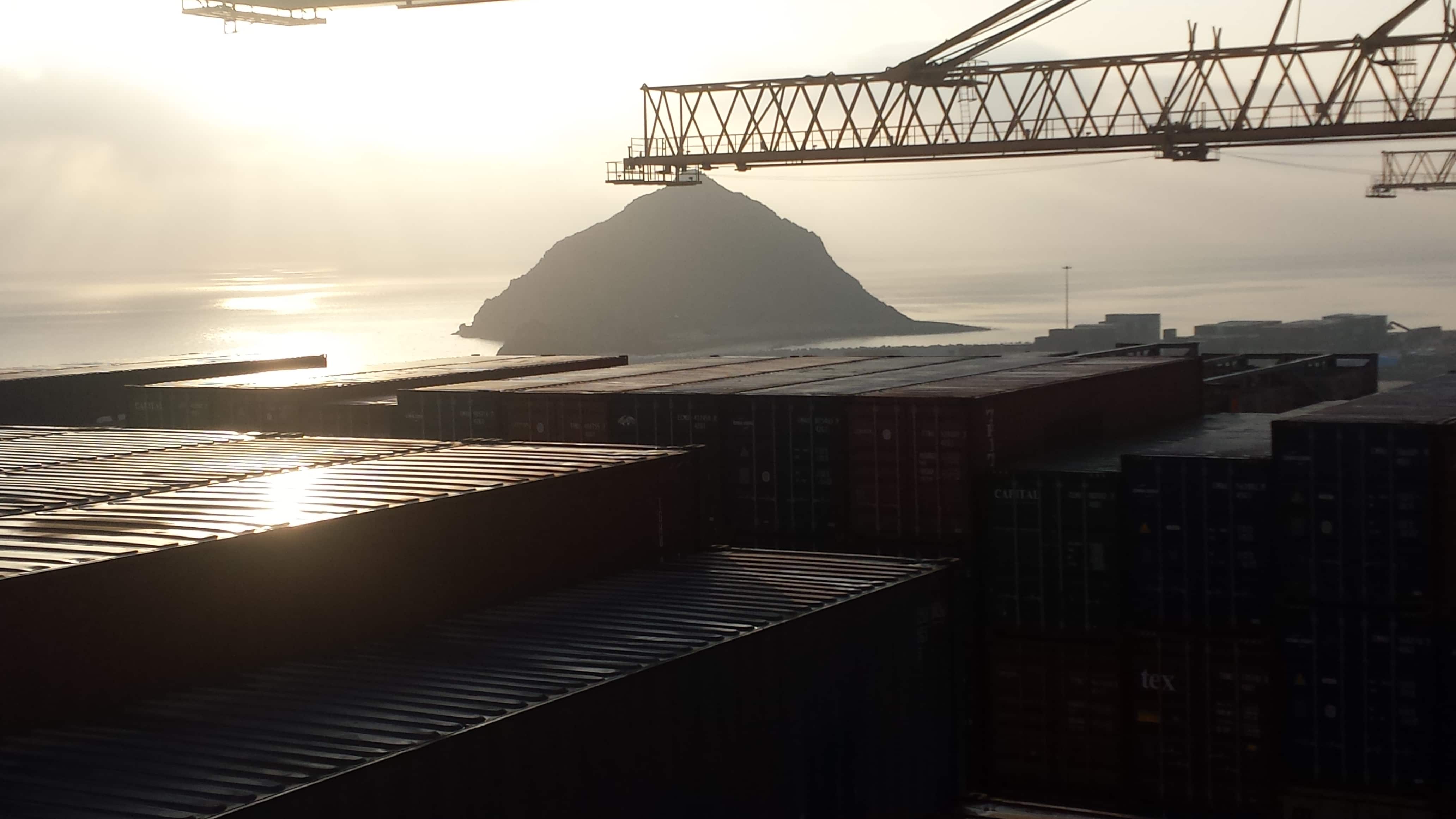
Will the little island hill survive the inexorable port expansion?
But I have also been thinking about another thing at work here in a port such as this: what are the constraints on the growth of these ports? Not land. When I last visited Khor Fakkan in September last year, the port manager was mentioning that he is running out of space for storing containers. He pointed to the dramatic hill rising in the background of the port and said, “If I have to move a mountain, I will.” In the age of land reclamations, where sand becomes a desirable commodity needed for making work-ground where there was sea before, land is literally Polanyi’s fictive commodity. Or maybe it is not so much fictive as fabled: you wish it upon a magic lamp (fuelled by oil that can now be extracted from sand and shale and god knows what) and it appears.
Labour is certainly not a constraint. Here are limitless workers supplied from countries whose primary export to the Gulf (and the world at large) seems to be humans. And they come in their millions, this international of workers, and one wonders how we can overcome the stubborn fissures that separate them from one another along the lines of language and custom and memory. This is where Deb Cowen’s brilliant book is so good, by reminding us of the obstacles that striking bodies can provide; and yet, Chief was telling me today about the ghost port of Rotterdam with its automated trucks driving around, increasing safety, but also removing the necessity for humans, those cogs in the machine that can also become spanners in the gears.
Capital may be another constraint. Who provides the endless capital for the endless expansion? For these ports need to be constantly dredged for ships with ever deeper and deeper draughts, and cranes have to be replaced with those with longer and longer arm spans and height as the ships become longer and wider and taller (I was gobsmacked by how BIG Corte Real is in comparison with another CMA ship moored here, Balzac). And who finances this? Is that where the constraints are? The debt restructuring Dubai World had to undergo would have to be something to study.
And finally, why here, on this sun-baked corner of Arabia, just north of Fujairah? Why Fujairah in fact?
